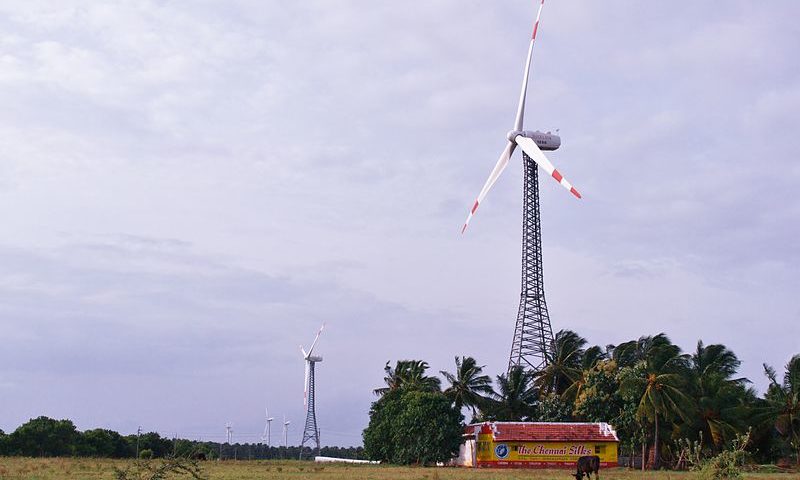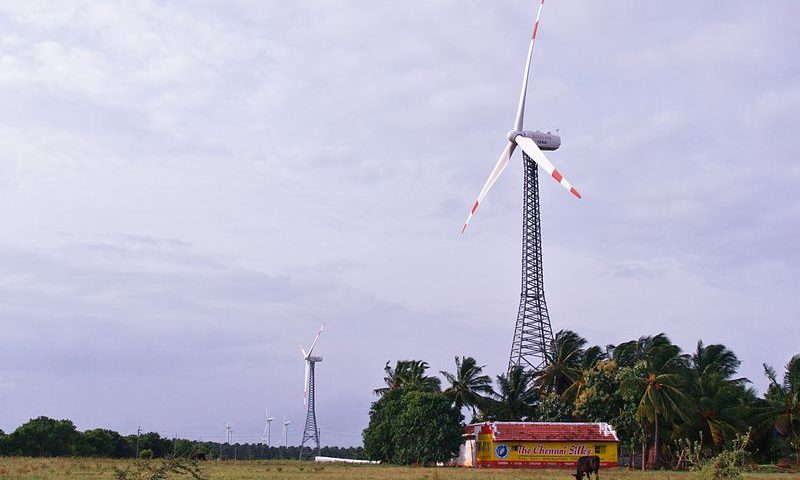- Over the past 40 years, annual energy production from wind in India has declined by about 13 percent, says study.
- Researchers have also found that the Indian monsoon is weakening as a result of warming waters in the Indian Ocean, leading to a steady decline in wind-generated power.
- Another study states that wind farms are harming migration patterns of birds and causing increasing number of deaths.
Most extreme weather conditions, the world over, are attributed to climate change. Now, a recent study suggests that climate change in India is also affecting a major renewable source of energy – wind.
The warming of the Indian Ocean, caused by global climate change, may be causing a slow decline in wind power potential in India, according to a new study from the Harvard John A. Paulson School of Engineering and Applied Sciences (SEAS) and the Harvard China Project.
Published in the journal, Science Advances, in December last year, the study calculates the wind power potential in India over the past four decades and finds that trends in wind power are tied to the strength of the Indian summer monsoon. “In fact, 63 percent of the annual energy production from wind in India comes from the monsoon winds of spring and summer,” noted a press release about the study. Over the past 40 years, this energy potential has declined by about 13 percent, suggesting that as the monsoon weakened, wind power systems installed during this time became less productive, according to the study
Researchers have also found that the Indian monsoon is weakening with warming waters in the Indian Ocean. This has led to a steady decline in wind-generated power, they note “Although India is investing heavily in wind power to tackle climate change and air pollution issues, the benefits of these substantial investments are vulnerable to the changing climate,” according to Meng Gao from the School of Engineering and Applied Sciences at Harvard University and one of the authors of the study.
Abhishek Gupta, president of solar panel manufacturing company Sunipod, feels that climate change has an overall impact. He said, “Climate change is impacting everyone today… it would be irresponsible to say that commercial activity remains agnostic. If the (wind) resource, which primarily dictates (power) generation from wind turbines is declining substantially, there is bound to be a negative impact on business. Generation data from wind farms in India is a good indicator of the quantum of impact on the current state of India’s wind energy sector. I trust that these environmental factors leading to the degradation of power generation have been accounted for considering the upfront capital investment required and the long expected life of these wind assets. However, if this change is significantly negative than expected, it is bound to deter new investments.”
An industry source, on condition of anonymity, said that in order to comment on whether climate change is causing a slowdown in the wind energy sector, one needs to have an ideal scenario where generation is consistent over a period of time and there are no external hindrances (like machine downtime, grid unavailability and so on). However, since a project in the Indian environment has lots of external issues to deal with, there is lack of empirical evidence from actual generation, so far, that can help suggest or evaluate the impact of change, if any. “Even though there are studies that suggest that changes in wind cycles and ocean currents (due to climate change) are impacting wind velocity, no stark effect has been visible on any operational project,” the source told Mongabay-India.
The industry source added that western and southern India are preferred for wind projects due to the south-west monsoon, which brings in heavy winds during and after summer in these areas. Thus, even if there is a climatic effect on the monsoons, its impact on the generation on an annual basis would again be subject to a comparison on a continual-run basis.
The study also suggests that the Indian monsoon is reportedly weakening as a result of warming waters in the Indian Ocean, leading to a steady decline in wind-generated power. According to the researchers, western India, including Rajasthan and Maharashtra, where investment in wind power is the highest, has seen the steepest decline over time. Other regions, particularly in eastern India, saw smaller or no decline.
Gupta believes that many studies argue on the degree and source of heating in the Indian Ocean. Although the cause may be unclear, the wind power industry in India must be able to study and improve site selection based on these impacting environmental factors. A seamless and resilient inter-state grid may help in balancing the needs with the resources, he suggests.
The flipside of wind farms
Giving a completely different spin to the power of wind energy, another study, by the Indian Institute of Science (IISc), Bengaluru, states that wind farms can be harmful to birds, disrupting their migration patterns and causing above average death rates.
“Wind farms reduce the number as well as activity of predatory birds, which in turn, results in an increase in the density of vertebrates like lizard on the ground. Since lizards have less fear of being preyed by birds, they are becoming less stressful. It means wind turbines are acting as new apex predators in the food chain in the local ecosystem”, the study done in the Chalkewadi plateau in the northern Western Ghats and published in the journal Nature Ecology & Evolution, said.
D.V. Giri, secretary general, Indian Wind Turbine Manufacturers Association (IWTMA), is not convinced. “Time and again, there have been reports on change in bird migration due to windmills. But birds fly at much higher heights and there are enough studies to show that windmill bird hits are the lowest on a scale of 10. Recently, a funded project of the Karnataka Renewable Energy Development Agency Ltd. and the National Institute of Wind Energy was undertaken by the Salim Ali Centre for Ornithology and Natural History (SACON) in Karnataka. The report clearly shows that there is very little impact of wind farms on birds,” he said.
On the other hand, Gupta stressed that wind farms run across large areas and are reaching higher up in the air. Since they must typically be located where the wind resource is rich and since migratory birds often use these wind patterns for “carry” and navigation, there could be a conflict which should be studied further. In addition to the wind farms and the changes in wind resource the birds will also have to contend with changes in temperatures and rainfall. The study by IISc also shows the impact that this is having the fauna and, subsequently, on humans in the area.
The Ministry of New and Renewable Energy (MNRE) recently issued a circular for retrofitting of transmission lines and wind turbines to avoid bird collision in the states of Rajasthan and Gujarat—habitat of the Great Indian Bustard (GIB). “Electrocution with transmission lines and collision with wind turbines of wind energy farms are major causes of death of these birds,” the circular stated.
“Wind energy is an important part of any country’s energy mix and it must find ways to super-optimise, proliferate and co-exist with the changing conditions and increasing environmental demands,” Gupta said.
Further, Giri commented on the flack that renewable energy infrastructure, particularly wind energy setups, gets for its apparent impact on climate change. “It is unfortunate that certain parties with a vested interest have been raising concerns on the negative impact of renewable energy on climate change. There was an agitation in Maharashtra that wind turbines are driving away the clouds resulting in lack of rain or weakening the monsoon and in fact, in that year there was a deluge of rain. Similarly, there was an unnecessary bogey being raised about the radiation on solar panels heating up the atmosphere,” he told Mongabay-India.
“In effect, renewable energy can actually combat climate change and global warming. Also, wind energy is the only renewable energy source which does not require any water – a resource that is going to become scarce in the near future,” Giri concluded.
Article Credit: Mongabay



If you want to increase your experience just keep visiting this
site and be updated with the latest information posted here.